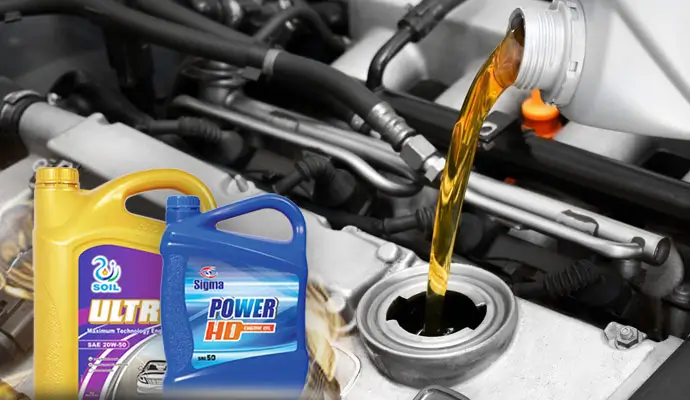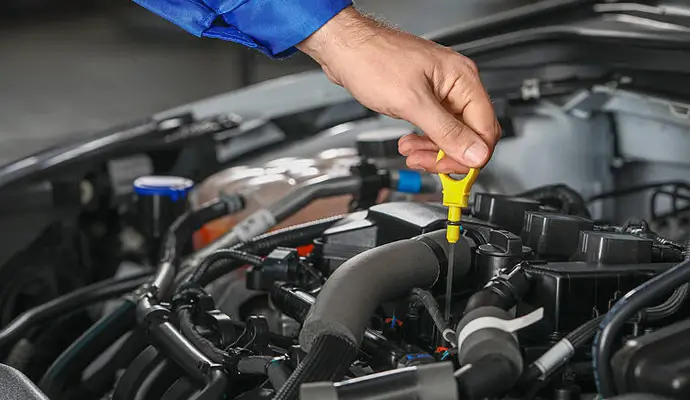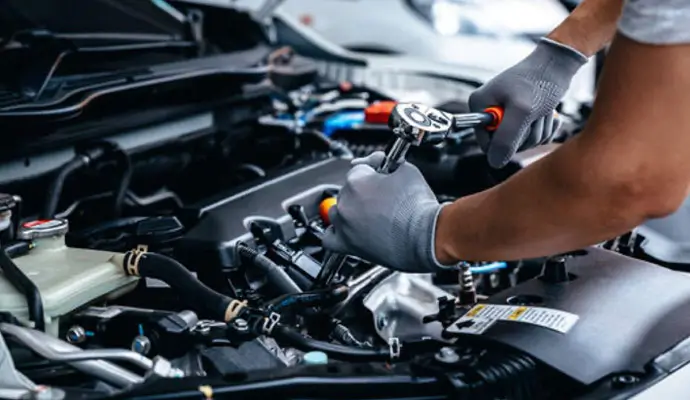10 Signs your Car needs an Oil change in Bangladesh

Maintaining your car's engine in Bangladesh is crucial for smooth performance, and one of the most essential tasks in this process is regular oil changes. Over time, engine oil breaks down, becomes dirty, and loses its ability to lubricate the engine, especially in Bangladesh’s varying climate conditions.
Neglecting timely oil changes can lead to serious damage, costly repairs, and even engine failure. So, how do you know it’s time to change your car’s oil? Here are 10 key signs to watch out for.
Is it time for an oil change? Keep your engine running smoothly with our premium products. Call us at +88-01700-760430 to get high-quality engine oils.
10 key warning signs your Engine Oil needs a top-up
Keeping an eye on your engine oil is crucial for maintaining your vehicle's performance. Because ignoring these signs can lead to costly repairs. So regular oil checks are essential to keep your engine running smoothly.
1. Check engine light is on
The check engine light is a frequent sign that an issue occurring under the hood. In many modern vehicles, this light will come on when the oil levels are low or the oil is dirty. Ignoring this warning can cause serious engine damage. Regularly checking your engine oil and acting promptly when this light appears can save you from costly repairs down the road.
2. Dark or dirty oil
Fresh engine oil is usually transparent and amber in color. Over time, it picks up dirt and debris from the engine, turning darker and losing transparency. Checking your oil regularly with the dipstick can help you spot this change. If the oil looks dark and dirty, it’s a clear sign that it’s time for an oil change. Clean oil ensures proper lubrication and reduces engine wear.
3. Louder engine noise
One of the key functions of engine oil is to lubricate the moving parts of your engine, reducing friction. As oil ages and becomes less effective, these parts can rub against each other, leading to louder noises such as knocking or rumbling. If you notice that your engine is noisier than usual, it may be a sign that the oil is no longer doing its job effectively.
4. Oil smell inside the Car
If you start to notice the distinct smell of oil inside your car, it could be a sign of an oil leak or that the engine is burning oil. Both of these issues suggest that you need an oil change or even further investigation into potential engine problems. Driving with an oil leak can be hazardous, so it's crucial to address this issue immediately.
5. Excessive exhaust smoke
A healthy engine should produce minimal exhaust smoke. If you start seeing blue or gray smoke from your car’s exhaust, it could indicate that oil leaks into the engine or is burned. This is often a sign that the oil is old and no longer performing its function properly. An immediate oil change and engine check-up are necessary to prevent further damage.
6. Decreased fuel efficiency
Has your car’s fuel consumption suddenly increased? Dirty oil can cause more friction in the engine, making it work harder and consume more fuel. Regular oil changes can improve fuel efficiency by ensuring that the engine is properly lubricated and operating at peak performance. If you notice you’re stopping for gas more often than usual, it may be time for an oil change.
7. Engine overheating
Engine oil helps cool down the engine by reducing friction and transferring heat away from the moving parts. When the oil becomes too old or is too low, it loses this capability, increasing the risk of engine overheating. Overheating can lead to severe engine damage, so it’s vital to ensure your oil levels are sufficient and the oil is in good condition.
8. Sluggish acceleration
When engine oil is no longer effective, it can cause your car’s performance to decline. You might notice that your vehicle struggles to accelerate smoothly or feels less responsive. This sluggishness is often due to the engine working harder than it should because of dirty or low oil. A fresh oil change can restore performance and give you a smoother driving experience.
9. Oil level dropping too quickly
If you find yourself frequently topping off your oil between changes, there may be an underlying issue such as a leak or excessive oil consumption by the engine. While small oil consumption between changes is normal, regularly adding oil is a red flag that needs immediate attention. It’s best to consult a mechanic and get an oil change to prevent further complications.
10. Oil change is overdue
Every vehicle has a manufacturer-recommended interval for oil changes, usually every 5,000 to 7,500 miles, depending on the type of oil and driving conditions. If you’ve gone beyond this mileage or can’t remember the last time you had an oil change, it’s time to get one. Even if your car isn’t showing any other signs, staying on schedule can prevent future problems and extend the life of your engine.

What are the symptoms of low oil in a car?
Low oil levels in a car can lead to serious engine damage if not addressed promptly. Here are the key symptoms to watch for if your car has low oil levels:
- The oil pressure warning light turns on
- Knocking or ticking noises from the engine
- Overheating engine due to insufficient lubrication
- Decreased engine performance or sluggish acceleration
- Reduced fuel efficiency
- Visible exhaust smoke
- Engine stalling or difficulty starting the car
- In severe cases, the engine may seize
When should car oil be changed?
Changing your car's oil regularly is essential for maintaining engine health. Here are key factors for determining when to change your car’s oil:
- Every 5,000 to 7,500 miles for regular oil
- Up to 10,000 miles for synthetic oil
- Follow your vehicle’s recommendations
- Change more often in extreme conditions (heat, traffic, dust)
- Monitor oil levels regularly for best performance
- Look for warning signs like dark oil, engine noise, or oil light

Protect your engine with timely maintenance
Recognizing these signs early can save you from costly repairs and ensure your engine runs smoothly for years to come. Regular oil changes are one of the simplest and most effective ways to maintain your vehicle’s health. If your car is showing any of these signs, don’t delay – get an oil change as soon as possible.
At Sigma Oil Industries Ltd, we provide high-quality engine oils that keep your engine performing at its best. Whether it's for heavy-duty diesel engines, passenger cars, or motorcycles, our high-performance oils are designed to protect and boost engine efficiency. Call us at +88-01700-760430 for the best oil solutions customized to your vehicle's needs!
Frequently asked questions (FAQs)
You can check if your car oil is okay by inspecting its color and consistency using the dipstick. Fresh oil is typically amber and smooth, while dirty oil appears dark and gritty. Additionally, if the oil level is low or if there are any unusual noises from the engine, it may indicate that the oil is no longer effective.
Car oil should generally be changed every 5,000 to 7,500 miles for conventional oil and up to 10,000 miles for synthetic oil. However, always refer to your vehicle’s owner's manual for specific recommendations based on your car’s make and model.
Symptoms of dirty engine oil include a dark, gritty appearance, unusual engine noises, a burning smell, decreased fuel efficiency, and the oil light illuminating the dashboard. If you notice any of these signs, it’s time for an oil change.
An oil change is due if the oil appears dark or dirty, the oil level is low, or if the oil change light on your dashboard comes on. Additionally, following your manufacturer’s recommended maintenance schedule is crucial for timely oil changes.
Bad engine oil usually appears dark brown or black. Fresh engine oil is typically amber or golden in color. If the oil looks thick, sludgy, or has a burnt smell, it is time for a change.
When a car needs oil, it may exhibit symptoms such as rough idling, decreased performance, engine knocking, or increased engine noise. You may also notice a decline in fuel efficiency and power.
